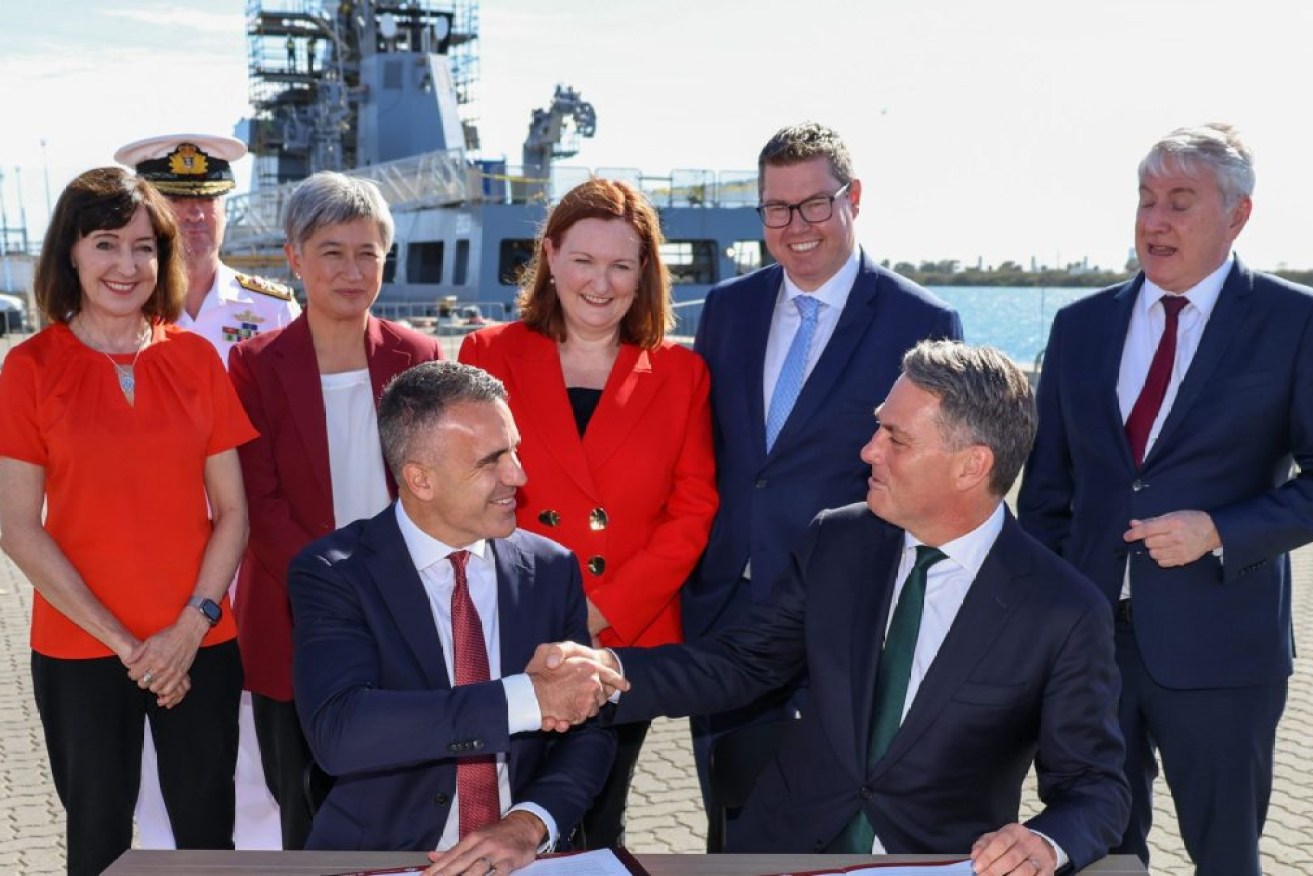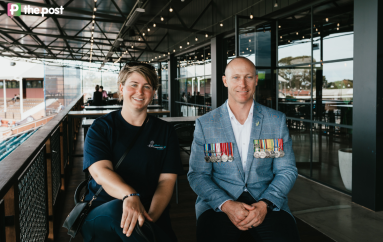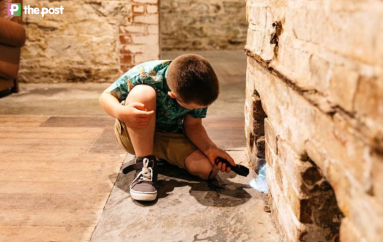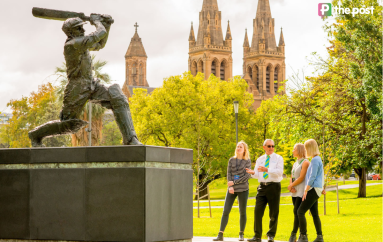Defence industry ‘unrest’ over long wait for submarine work
Adelaide’s Defence Teaming Centre says the “valley of death is real” for firms facing years-long waits for work on AUKUS nuclear powered submarines, with some already left in limbo for 18 months after the French subs contract was torn up.


Premier Peter Malinauskas, Defence Minister Richard Marles and Foreign Minister Penny Wong at Osborne in March. Photo: Tony Lewis/InDaily
Doubt over the looming work void is clouding industry reaction to Tuesday’s announcement of the deal to buy and build nuclear submarines in a deal set to cost taxpayers up to $368 billion.
As Premier Peter Malinauskas left for the United Kingdom yesterday “to immediately capitalise on the AUKUS submarine partnership”, DTC chief executive officer Audra McCarthy said her peak industry body is working out how defence companies can win promised work in the global supply chain at AUKUS submarine construction sites in the UK and United States.
Submarine construction is meant to start in South Australia this decade, but McCarthy said in the meantime some companies have left the defence sector after being burned over the $90 billion Naval Group contract being shredded by the Morrison Government in September 2021 when it signed up to the AUKUS security alliance.
“I am hearing a bit of unrest that opportunities won’t be realised for 10 years, that reality is starting to seep through,” McCarthy said.
While she said the announcement would create thousands of welcome jobs “there are always these announcements and then it takes ages to happen” and “decisions and procurement take so long, that valley of death is real”.
McCarthy said many companies won contracts under the now cancelled Future Submarine Programme with France.
This week they heard thousands of South Australian jobs are promised under the AUKUS deal that will see the Australian Government initially buy three Virginia Class nuclear-powered submarines from the United States in the early 2030s.
Alongside the purchase, a British-designed evolved Astute-class nuclear powered submarine will be designed in the United Kingdom and then built in Adelaide, Defence Minister Richard Marles promising yesterday that “the first steel will be cut this decade”, with delivery of the first sub expected in the early 2040s.
McCarthy said there appeared to be numerous construction jobs in the first instance, with $2 billion over four years earmarked to begin work on a new submarine construction shipyard and skills centre at Osborne.
But she could not see any immediate work for South Australian companies that had already invested heavily in the last Future Submarine contract.
“It typically can take a company up to five years to win work in the defence sector,” McCarthy said, adding that the process demanded time and investment.
“For some companies, the losses from the last program were significant, (these are) companies receiving strong messages from the government which enforced the expectation that the program was a sure thing,” she said.
“We had ministers going around telling companies to get on board, so companies upgraded their security, they upgraded their certifications.
“(The issue now is that) the opportunity for those companies to get some kind of return, it’s a long time between drinks.”
During the 18-month lull, some companies had left the defence sector and some “are saying if they want me to be part of it, they can come and knock on my door”, McCarthy said.
Marles yesterday said in Adelaide that there would be a pipeline of work beginning with the construction of the shipyards and a new skills centre at Osborne near the existing submarine yard where the nation’s existing Collins Class submarines are maintained.
Collins Class submarine life of type extension would continue to sustain jobs, he said, with work on the first new submarine starting this decade and delivered to the Royal Australian Navy in the early 2040s.
“From a jobs perspective this is a great outcome for the Australian economy, people will be involved in infrastructure and construction initially,” McCarthy said.
But she said industry needs to know where work will come for South Australia’s mainly small and some medium defence companies – adding that global primes based in Australia were already working on major contracts.
BAE Systems Maritime Australia, a subsidiary of BAE Systems Australia Ltd, is currently working on the multi-billion-dollar build of nine new Hunter Class frigates at Osborne.
While visiting the UK, Premier Malinauskas will tour the BAE Systems Barrow-in-Furness submarine shipyard where the new SNN AUKUS submarines will be designed. No company has yet been chosen for the new submarine design work.
Malinauskas will be hosted on the tour of the Barrow shipyard and its Submarine Skills Academy by the British Minister for Defence Procurement before meeting officials in London.
“We’re making sure we seize every moment to make the most of this intergenerational opportunity,” Malinauskas said.
“In coming years, hundreds of South Australians will travel to and from Barrow-in-Furness to learn and share knowledge.”
Federal Defence Industry Minister Pat Conroy, who visited the Osborne shipyard yesterday, said in response to questions about defence industry involvement that he was confident “there will be significant work opportunities for South Australia, following our announcements this week”.
“There will be 8,500 direct jobs in the industrial workforce, including up to 4,000 jobs in designing and building the infrastructure for the Submarine Construction Yard in Osborne. Work on this begins this year,” he said.
“All of this is in addition to the work on full-cycle docking and Collins class life of type extension.”
Details announced on the Defence website said Australian companies will be employed in the construction and maintenance of SSN-AUKUS plus the maintenance of visiting United Kingdom and United States submarines, and are expected to contribute to AUKUS supply chains more broadly.
“AUKUS partners will focus on key components where Australia has demonstrated industrial capability, such as pressure hull steel, valves, pumps, batteries, switchboards, lighting and additive manufacture,” according to the AUKUS Nuclear Powered Submarine Pathway a Partnership for the Future document.
“In parallel and before commencement of the build of its first SSN-AUKUS, Australia will pursue the opportunity to begin manufacturing components at the future Submarine Construction Yard at Osborne, South Australia, for use by UK and US production lines,” it said.
“These activities will allow Australia to build experience within the yard and achieve certification of the facilities and workforce.”




